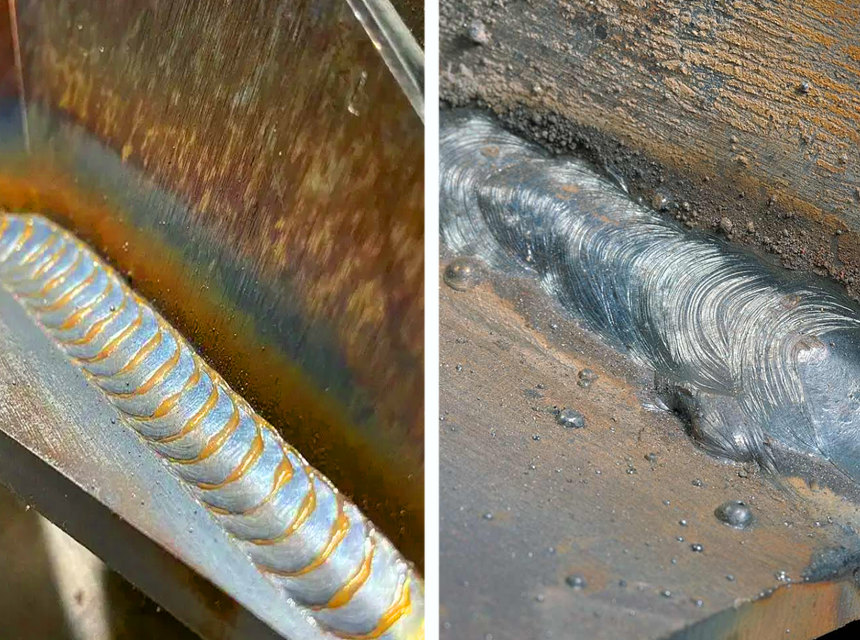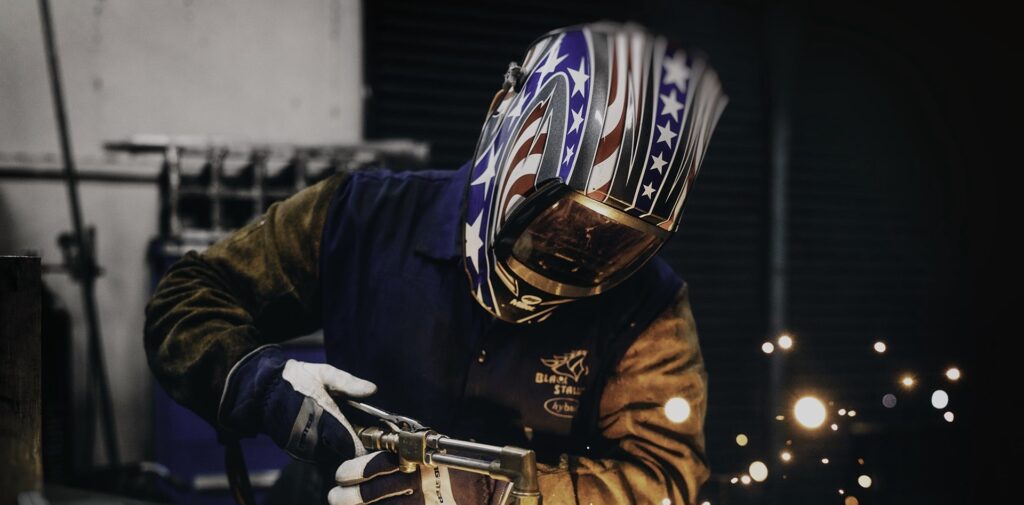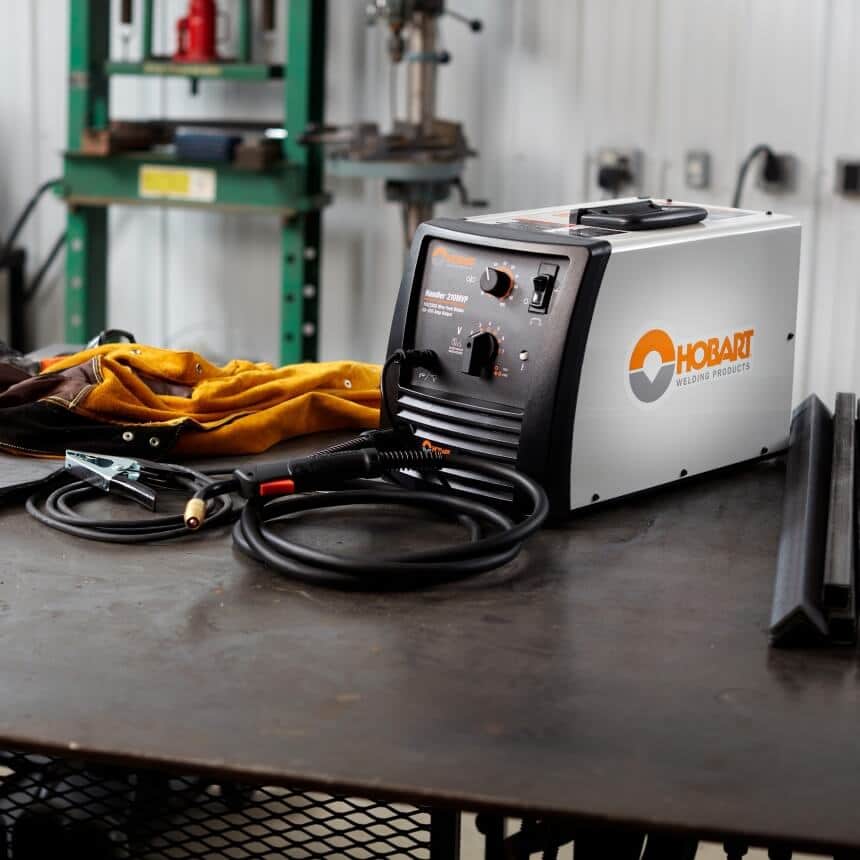AC Vs. DC welding can cause a lot of confusion, and most people often need help differentiating between these two. Even aspiring professionals that have just entered the welding business need to develop more in-depth knowledge about AC Vs. DC welding. In order to do that, you should read this article and gather accurate information.
When learning about welding and what AC and DC are, a person is likely to struggle and face difficulty comprehending their differences. Different AC and DC welding provide various advantages and different drawbacks. It would be best if you educate yourself on how they work and they may benefit.
It is challenging to learn because there are so many factors to consider; how they fit your needs, whether they are beneficial for you, whether they will give you the final result, and most importantly, what their drawbacks are. For instance, some people choose to opt for AC welding for special scenarios, and DC welding is the most popular because it’s suitable for almost every task.
Some people want to know the difference between AC and DC because they saw different settings on their welding machines or they are aspiring professionals who wish to increase their knowledge, understandably so. In either case, this will help you understand their differences in detail.
AC welding is also known as Alternate Current; it significantly improves the TIG welding process. People usually use the AC TIG welding process when they need to weld aluminum or any other similar metal.
When you use an alternating current during the welding process, it’s called AC welding. An alternating current reverses and changes its direction many times in a single second. Naturally, a 60-hertz current is likely to shift the polarity 120 times in a single second.
Because of its reversible direction and magnetic field, it has a steadier arc on the magnetic components.
There are plenty of aspects that make AC welding superior, considering the number of advantages it has. One of the main benefits of AC welding is that it’s cheaper in terms of price. Many beginning welders appreciate this aspect when they are on a budget, and AC welding machines are all they have. So, opt for an AC welder if you’re looking for wallet-friendly welding machines.
It’s also extremely useful when you work with magnetic materials. AC welding is most known for its effective work with magnetic material. So for people who deal with substances that have a powerful magnetic source, an AC welder is perfect. It’s perfect because it helps reduce the blow arc that most DC welders have.
Another aspect makes it superior, and it’s something not many people know. An AC welding machine is ideal for welding aluminum because it has a higher temperature rate. This allows the AC machine to weld the plate metals deeper, which means it’s an excellent choice when you want to pierce the metal/material deeply.
There are drawbacks to all types of welding, and AC welding is not an exception. While it is the ideal option in many scenarios, it’s not a perfect solution for every problem. When you use AC welding, you may notice that the same thing that makes it the perfect solution for many instances becomes one of its biggest drawbacks. It’s the way the current constantly reverses and changes directions with speed.
The reversible current makes it impossible for there to be continuous amperage. Due to how there are constant and rapid changes in the direction of the current, there is a brief and significant pause that doesn’t allow the electric current to pass through. This makes AC welding less favored among people who want precision and accuracy.
Moreover, AC welding splatters a lot more than DC welding. This makes AC welding a poor choice when you want to weld overhead or vertically.
The pros and cons of AC welding are:
DC welding is more common than AC welding. It’s popular and more favored for many reasons. In fact, it’s considered to be better and superior to AC welding. The full form of DC welding is direct welding, and it’s because it follows in one singular direction. It follows consistently and in one direction.
It employs a constant polarity because of that one directional current. The current is both negative and positive. The positive polarity flows from a welder and then to the electrode. Afterward, it returns to the welder.
And in negative polarity, the one-directional current passes through the welder and to the electrode; afterward, it goes to the workpiece and then it returns to the welder. Positive electrode welding allows the person to pieces deeply, and the negative electrodes give faster deposition rates.
Considering that DC welding doesn’t have the same issues as AC welding, it’s considered better. Direct Current doesn’t pause its current flow and provides consistent and stable arcs.
Direct Currents are typically found in low-voltage devices and in regular batteries. Some devices and machines use DC electricity. Even your car or your phone has Direct Currents. The DC welding arc is precise, allowing people to have a flawless welding experience.
Direct Current is the better choice when you’re a beginner and looking for straightforward and precise welding. Learning about DC welding is simpler, and it has a shorter learning curve. With the help of DC welding, you can produce functional and attractive welds in no time.
Regardless of beginner or pro, people have always preferred DC welding because of its many advantages and benefits.
Since DC welding doesn’t have a pause in the current, unlike AC welding, people have a more stabilized arc and a better welding experience. People prefer DC welding; it provides a smoother and more precise result. It also makes the overall process more accurate and cleaner.
Unlike in AC welding, there isn’t excessive splatter, and considering how it makes less of a mess, it can give the precision you can’t find in AC welding. This is what makes Direct Current more reliable and a better choice.
In most instances, people like to use DC welding instead of AC welding because it gives them better opportunities. For example, you can’t weld overhead or vertically with AC welding; however, you can do both with the help of Direct Current welding.
Regardless of how beneficial it has proven to be in most cases, it has its fair share of drawbacks. DC welding doesn’t have all benefits, particularly those that AC welding is famous for.
When you decide to go for DC welding, you will be at risk of a major arc blow, making it less than ideal if you want to work with material or substances with a powerful magnetic force.
Unlike AC welding, it doesn’t have a high-temperature rate, so if you want to weld or work with aluminum. In order for aluminum to weld, it needs to be under a high temperature to melt and weld properly.
These machines can be relatively expensive regardless of how great DC welding is. This is a factor that sways most beginners away from DC welding machines AC. Their pricing factor affects their overall value in the market because people aren’t generally capable of paying such a hefty sum.
To understand which welding is the best fit for you, you should compare and then analyze which is the perfect one.
Here are the pros and cons of DC welding.
Direct Current (DC) welding is used in most cases. People highly prefer it because of how precise and accurate its results are. And while Alternate Current (AC) isn’t as appreciated, it offers prominent advantages that DC welding doesn’t.
There isn’t a definitive way of identifying which one is superior; you can only recognize their individual advantages and drawbacks and decide which one will be suitable for your needs.
Understanding the difference between AC and DC welding is crucial. You need to completely understand their differences to be able to make an informed decision about which welding machine to buy.
AC welding is used in different methods, such as AC stick welding Vs. DC (essentially, the same things as AC Vs. DC stick welding), ACVs. DC flux core welding, AC Vs DC MIG welding, AC Vs. DC arc welding, AC arc welding Vs. DC, and lastly, AC Vs. DC TIG welding.
All these methods are frequently used; however, TIG welding AC Vs. DC is the cleanest, quickest, and most accurate way to weld with Alternate Current.
You need to consider AC welding machines if you work with aluminum or any material and substance with a powerful enough magnetic field. Considering AC welding is most known for its efficiency and performance with these materials, you need to opt for an AC welding machine. They are also an excellent option if you’re on a budget.
Like Alternate Current welding, Direct Current welding has two effective ways, such as DC Vs. AC TIG welding and DC Vs. AC stick welding.
DC TIG welding has been proven to be one of the fastest ways one can meld and still have accurate and flawless results. It’s important to remember that DC welding is known for its effective and accurate results. It also has a more stabilized arc that’s consistent and smooth. To find the best TIG welders, check out our article and select a machine that’s Editor approved.
However, the thing that drives most people away is its steep pricing. While some find it too expensive, others find it worth its cost. It provides excellent advantages; some of the most prominent ones are a stabilized arc and clean and accurate final results.
Now to help you identify and decide which welding machine to buy:
The best welders for beginners are machines that can provide clean and efficient results. DC welding is a better option to choose from because of how accurate and efficient the results are. However, when a person starts out in the welding field, they are often on a budget, and DC welders are more expensive. This often drives people away and pushes them towards AC welding.
If your work involves welding aluminum, then you should go for AC welding. AC welding is known for being an excellent option because it’s perfect for magnetized materials and aluminum. DC welders don’t have the heat temperatures required to weld aluminum and other powerful magnetic materials properly.
Welding thin metals are perfect for DC welding machines. Since they have a lower temperature than AC welding machines, you can use them to weld thin materials without compromising the material.
In contrast, if you work with a thicker substance, you will need a weld that can penetrate deeply. AC welding machines are the best option when you deal with thick plates and materials; they pierce deeply, which allows the weld to have a firm hold.
DC welding produces fewer splatters and, subsequently, doesn’t leave a mess. For overhead welding, it’s crucial to have a clean process for overhead welding because you don’t want molten matter splattered on any exposed part of your body. The same goes for vertical welding; you need to have a DC welding machine for a safe and fast process.
When you’re working with materials that have powerful magnetic force, you will need to have an AC welder to support it. DC welding machines have issues with the arc below, unlike AC welding machines, making AC welders the best option.
There are many welding types, and the most popular one is TIG welding because of how it gives the cleanest and most accurate results. TIG welding is an abbreviation for Tungsten Insulated Gas welding. This welding type has been getting more popular each day, and the main reason for its increased popularity is that it’s safer and more precise.
And so people who create intricate and detailed work use TIG welding because a) it is the safer option, and considering the nature of their work, they have to be careful, and b) it provides the most detailed finishing that other types of welding don’t.
If you’re looking for the best TIG machine with both AC and DC welding, you should consider PRIMEWELD TIG225X AMP or Weldpro Digital TIG 200GD. Considering how they are both excellent choices, you can’t go wrong with either of them.
They both have premium functions that will serve you well. These products are reinforced with advanced technology, and they can provide accurate results.
These products best represent TID welding, and it would be in your best interest to opt for these seeing how they will turn out to be a worthy investment.
DC stick welding has many benefits compared to AC stick welding. It has better smoothness and stabilized arcs. It also starts easily, has fewer arc amperages, creates less splatter, and it provides easy overhead and vertical welding.
After TIG welding, stick welding is one of the most effective and clean ways to weld. Finding the best stick welder machines is challenging, and if you want a narrowed list of the top picks, you should visit our site for reliable information.
There is a lot to understand about AC Vs. DC welding. After going through this comprehensive guide, you can understand their differences, advantages, and drawbacks. Now, you can choose between AC or DC welding machines without hesitation because you will know their peculiarities, pros, and cons.





